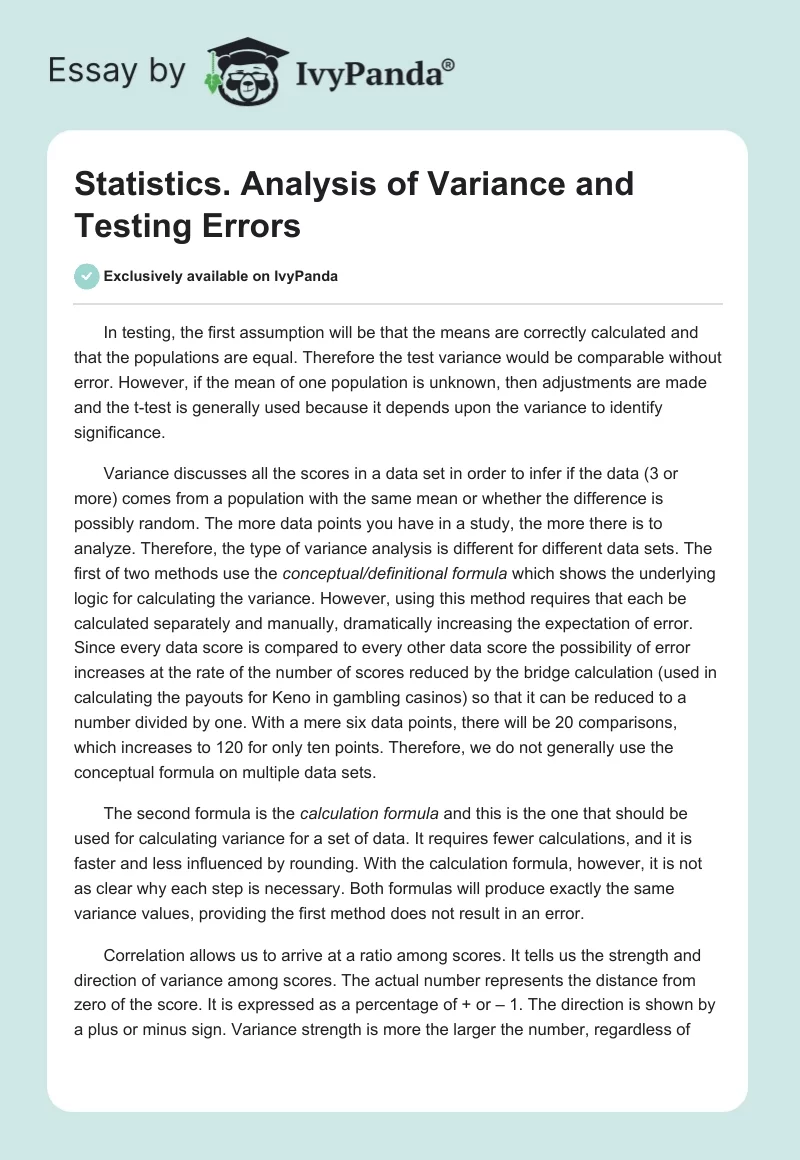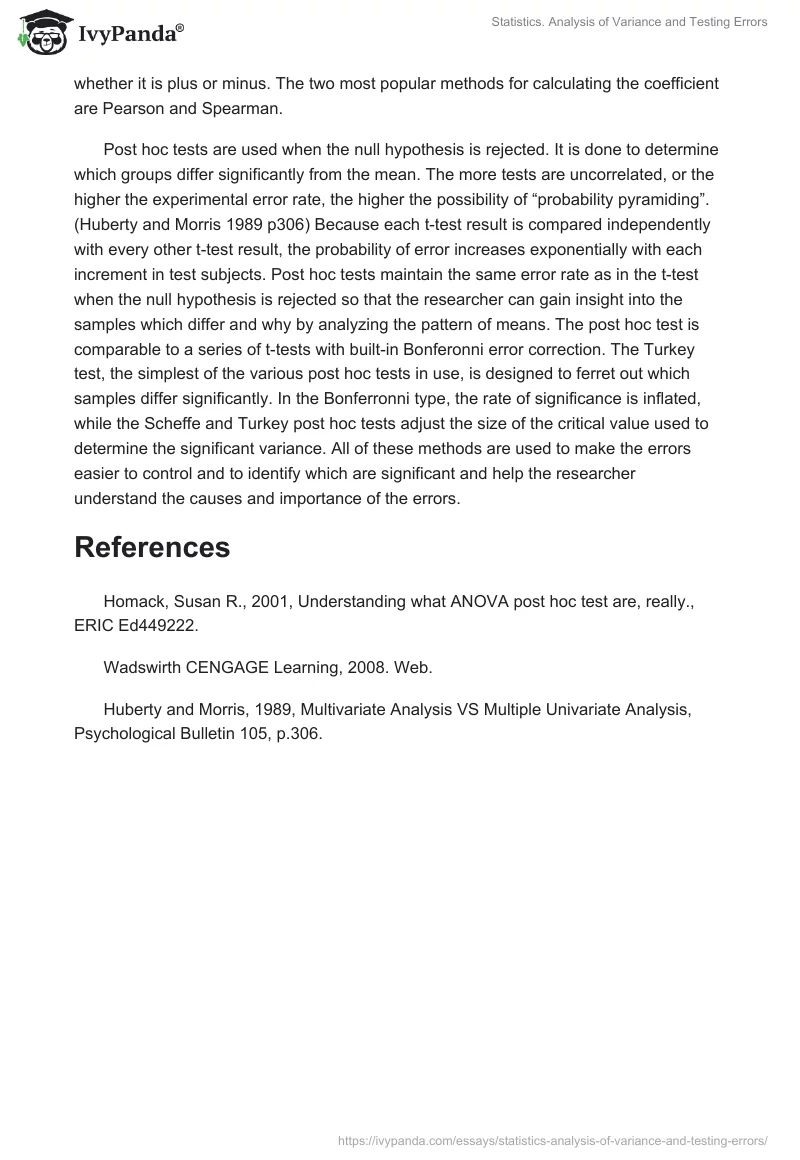In testing, the first assumption will be that the means are correctly calculated and that the populations are equal. Therefore the test variance would be comparable without error. However, if the mean of one population is unknown, then adjustments are made and the t-test is generally used because it depends upon the variance to identify significance.
Variance discusses all the scores in a data set in order to infer if the data (3 or more) comes from a population with the same mean or whether the difference is possibly random. The more data points you have in a study, the more there is to analyze. Therefore, the type of variance analysis is different for different data sets. The first of two methods use the conceptual/definitional formula which shows the underlying logic for calculating the variance. However, using this method requires that each be calculated separately and manually, dramatically increasing the expectation of error. Since every data score is compared to every other data score the possibility of error increases at the rate of the number of scores reduced by the bridge calculation (used in calculating the payouts for Keno in gambling casinos) so that it can be reduced to a number divided by one. With a mere six data points, there will be 20 comparisons, which increases to 120 for only ten points. Therefore, we do not generally use the conceptual formula on multiple data sets.
The second formula is the calculation formula and this is the one that should be used for calculating variance for a set of data. It requires fewer calculations, and it is faster and less influenced by rounding. With the calculation formula, however, it is not as clear why each step is necessary. Both formulas will produce exactly the same variance values, providing the first method does not result in an error.
Correlation allows us to arrive at a ratio among scores. It tells us the strength and direction of variance among scores. The actual number represents the distance from zero of the score. It is expressed as a percentage of + or – 1. The direction is shown by a plus or minus sign. Variance strength is more the larger the number, regardless of whether it is plus or minus. The two most popular methods for calculating the coefficient are Pearson and Spearman.
Post hoc tests are used when the null hypothesis is rejected. It is done to determine which groups differ significantly from the mean. The more tests are uncorrelated, or the higher the experimental error rate, the higher the possibility of “probability pyramiding”. (Huberty and Morris 1989 p306) Because each t-test result is compared independently with every other t-test result, the probability of error increases exponentially with each increment in test subjects. Post hoc tests maintain the same error rate as in the t-test when the null hypothesis is rejected so that the researcher can gain insight into the samples which differ and why by analyzing the pattern of means. The post hoc test is comparable to a series of t-tests with built-in Bonferonni error correction. The Turkey test, the simplest of the various post hoc tests in use, is designed to ferret out which samples differ significantly. In the Bonferronni type, the rate of significance is inflated, while the Scheffe and Turkey post hoc tests adjust the size of the critical value used to determine the significant variance. All of these methods are used to make the errors easier to control and to identify which are significant and help the researcher understand the causes and importance of the errors.
References
Homack, Susan R., 2001, Understanding what ANOVA post hoc test are, really., ERIC Ed449222.
Wadswirth CENGAGE Learning, 2008. Web.
Huberty and Morris, 1989, Multivariate Analysis VS Multiple Univariate Analysis, Psychological Bulletin 105, p.306.


